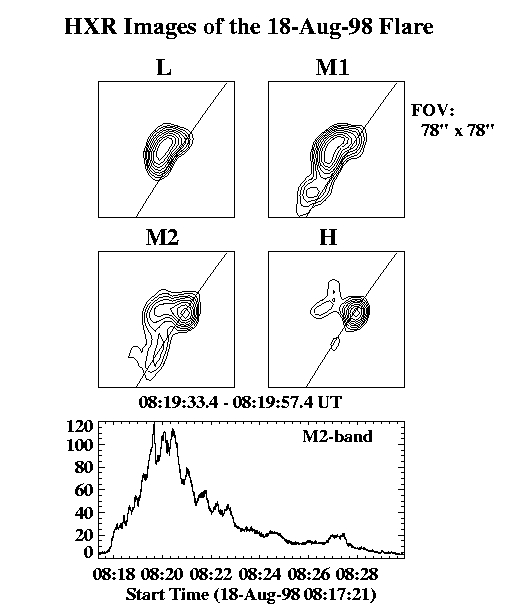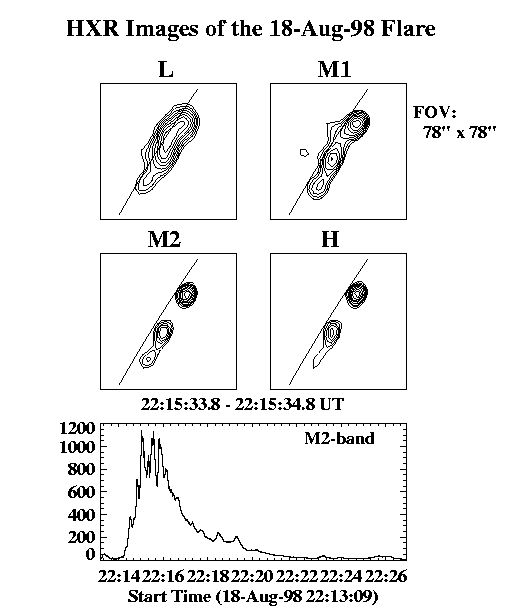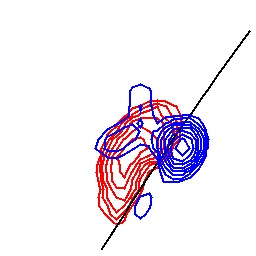

(Masuda, in Proc. IAU symp. 195, "Highly Energetic Physical Processes and Mechanisms for Emission from Astrophysical Plasmas", 413-414, 2000.)
After the discovery of the above-the-looptop hard X-ray source in solar flares, many solar physicists try to understand how this source is created and what kind of role this source plays in solar flares. It is believed that this source is directly related to energy-release and particle-acceleration in solar flares. However, we have not yet revealed what happens above a flaring loop.


In this situation, we analyzed two X-class impulsive flares which occurred on 18 August 1998. They are so-called homologous flares which occur in the same magnetic configuration in the solar corona and have similar characteristics. However, the above-the-looptop hard X-ray source was observed only in the earlier event because the intense emission from footpoint sources are occulted by the east limb in this event. Since the second event occurred 14-hours later at about E87, the whole emission from footpoint sources was observed. Combining these two events, we can get full information of hard X-ray emissions in solar flares.

From a detailed analysis of footpoint sources, they are well explained by precipitation of accelerated electrons with a power-law spectrum in the energy range of 14-93 keV. On the other hand, the above-the-looptop source has a softer spectrum than those of footpoint sources and is not fit by a single power-law. There may be a breaking point around 50 keV, and steeper in the higher energy range. This result gives some limitation and also hint to fundamental parts of flare models, including how and where precipitating electrons are originated.